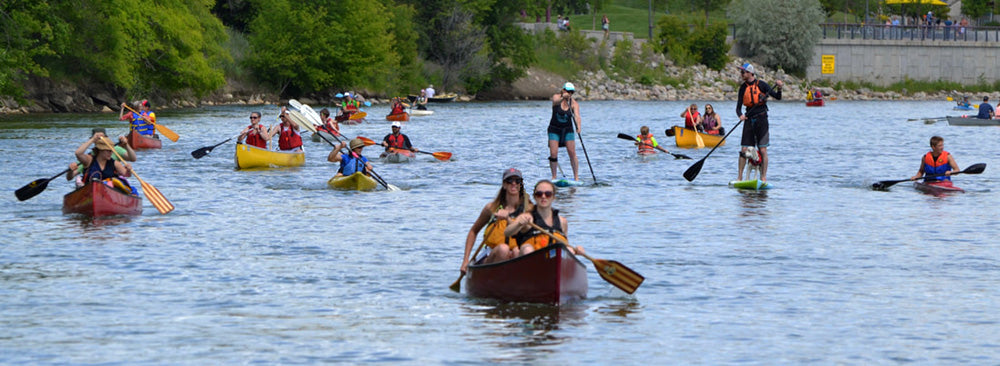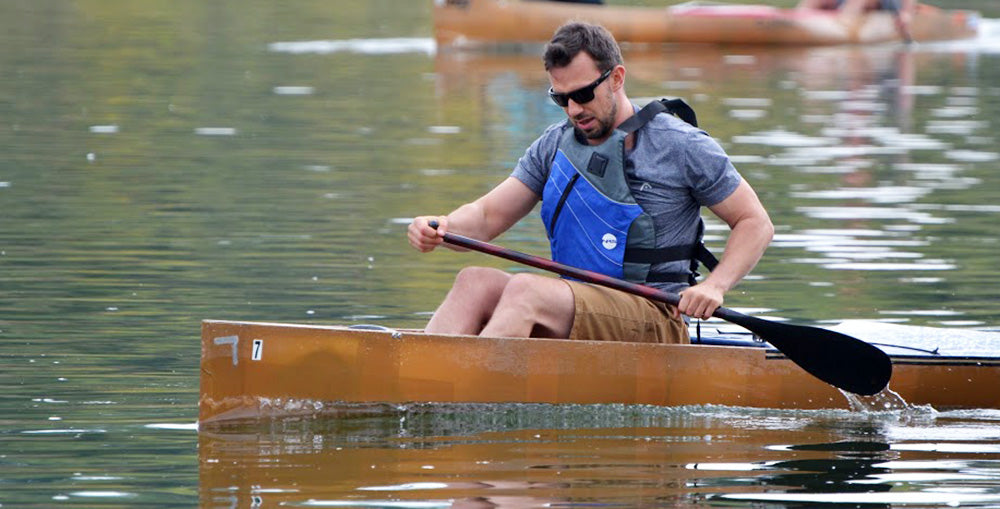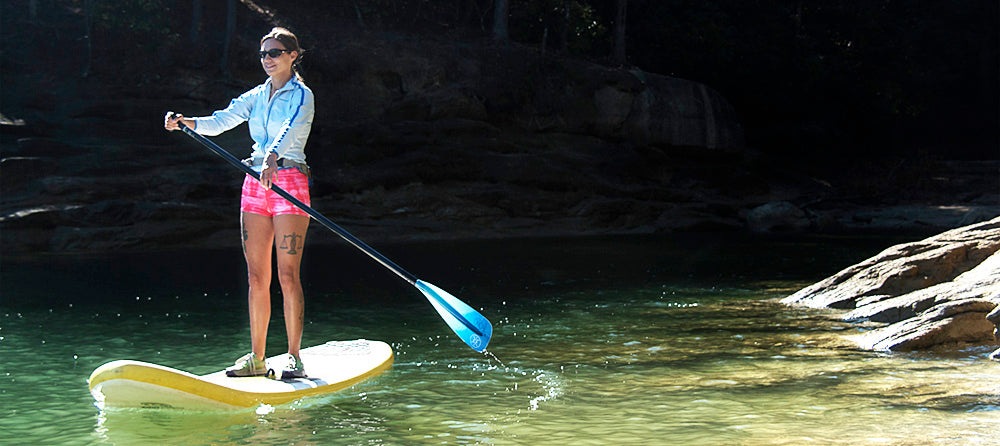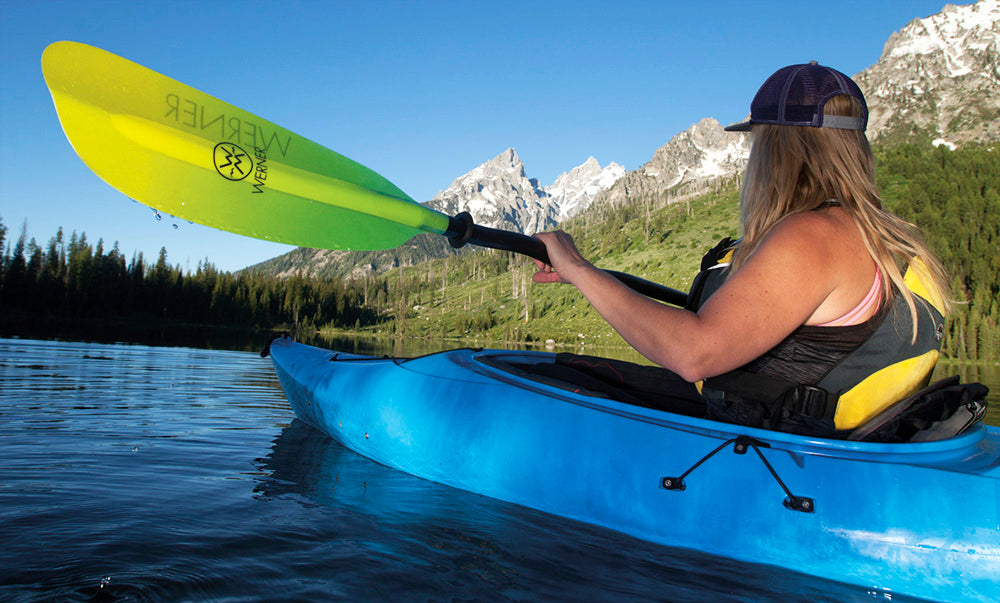Choosing a paddle: factors to consider
We see this all the time. Someone buys a new canoe/kayak/SUP, then chooses the least expensive paddle because there isn't anything left in the budget.
Consider this: if you paddle at a leisurely stroke rate, you will be lifting the paddle over 1000 times an hour. Cheap paddles tend to be heavy. You can see where we're going with this.

This post is not meant as a ploy to sell high end paddles. Although we love seeing people leave the store with quality gear, we don't necessarily want you to spend more money. We want you to have the best paddle that fits your needs and your budget, and there are a lot of factors to consider.
Let's do some math. Say you've bought a canoe, and you choose a budget paddle that weighs in at a typical 30oz. Most recreational paddlers have a stroke rate of around 25 strokes per minute. In an hour of paddling, you'll be lifting that paddle 1,500 times which is a total of 2,812.5 lbs.
Now say you choose a carbon paddle which weighs in at 10oz. At the same stroke rate, you'd end up lifting 937.5 lbs in an hour of paddling.

Of course there are a lot of other factors to consider here. A carbon paddle won't be as durable as a plastic/aluminum paddle so might not fit your needs at all. If you're going to be bashing your paddle against rocks all day, go with the plastic one. If you are careful with your gear you may decide the carbon paddle is worth the money, since it will save you thousands of pounds of effort. Most people, however, choose something in the middle - something that doesn't blow the budget but doesn't weigh a tonne. Our lightest wood canoe paddle (the Grey Owl Fleetwood) weighs in at 14 oz, so you get a light weight paddle that is more durable (and affordable) than carbon.
Here's another thing to consider: buoyancy of the paddle. Your plastic budget paddle will go "spe-loosh" into the water and feel heavy through the stroke. Higher end paddle blades may have spines filled with air or foam cores, which literally buoy the paddle up in the water. You'll put it in and it will almost float through your stroke and come out easily.

There's also the shape and size of the blade to consider. A larger blade will grab more water, so you will potentially get more power with each stroke but it will take longer to go through the water. It's almost like riding a bike and choosing a low gear vs a high gear. Typically whitewater paddlers, stern paddlers, and those who have a more powerful stroke will choose larger blades. With a budget paddle, you don't usually have much choice in blade size.
As for blade shapes, a long, narrow blade will enter the water differently than a short, fat blade. Think about how you paddle, what kind of boat you will be in, and what kind of water you'll be on. Paddling canoe in shallow water? Don't pick a long, skinny blade - it will hit the bottom and be annoying. Kayaking leisurely and want the least amount of effort? Choose a low-angle paddle with a narrower, longer blade so you won't need to lift your arms as high.

These are only a few factors to consider when buying a paddle. Any reputable paddle shop can help you pick the right paddle for your needs and your budget. We just want to make sure you leave room in your boat-buying budget to get the right paddle, not the cheapest one.
Final tip: When you're in the store, hold the paddle in your hands. Imagine using it. At 1,500 strokes per hour, make sure you like what you're feeling!


Leave a comment